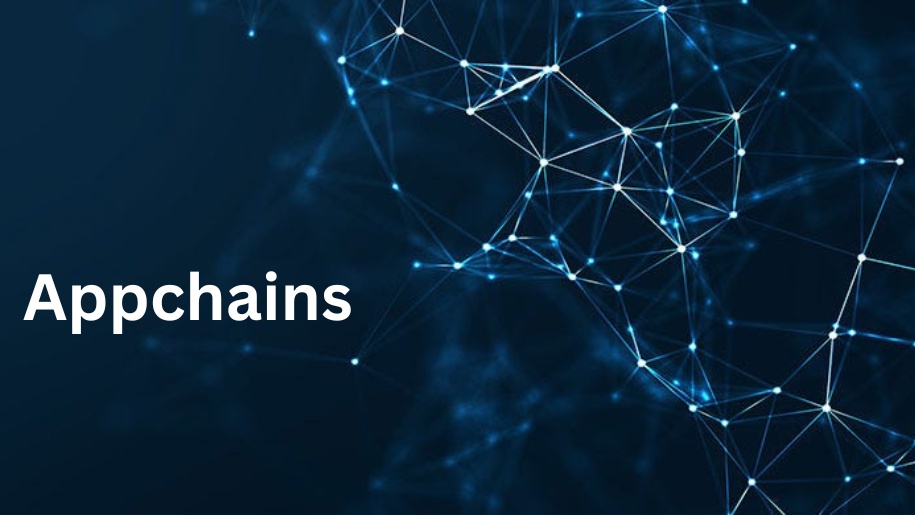The world of blockchain and decentralized applications (DApps) has witnessed tremendous growth and innovation over the years. However, the challenge of scalability and the need for customized solutions for specific use cases have remained prominent. Enter Appchains, a groundbreaking technology that empowers developers to build tailored DApps and revolutionize the decentralized landscape. In this article, we'll explore how Appchains enable a customized decentralized world, catering to the unique needs and visions of DApp developers.
Understanding Appchains
Appchains are a relatively new concept in the blockchain space, emerging as a solution to enhance scalability, flexibility, and customizability for decentralized applications. In essence, an Appchain is a separate and independent blockchain that operates within the larger blockchain ecosystem. It can be thought of as a specialized sub-blockchain that runs alongside the main blockchain network.
The idea behind Appchains is to provide developers with the ability to create customized DApps that function optimally for specific use cases. Unlike traditional DApps that operate on the main blockchain network, Appchains can be designed with unique consensus mechanisms, governance models, and smart contract functionalities.
Enhanced Customization for DApp Developers
One of the most significant advantages of Appchains is the enhanced customization they offer to DApp developers. Appchains allow developers to tailor their blockchain solutions to meet the specific requirements of their applications. This includes choosing the consensus algorithm that best suits the use case, implementing unique governance mechanisms, and even designing custom smart contract functionalities.
For example, a DApp focusing on supply chain management might require a different consensus mechanism and governance model compared to a decentralized finance (DeFi) application. Appchains allow developers to fine-tune these parameters, ensuring that the DApp operates efficiently and securely, precisely aligned with its intended purpose.
Scalability through Parallel Processing
Scalability has been a long-standing challenge for blockchain networks. As the number of users and transactions increase, the main blockchain can become congested, leading to slower transaction processing and higher fees. Appchains address this issue by enabling parallel processing of transactions.
Each Appchain operates independently and can process its transactions in parallel, significantly improving the overall throughput of the decentralized system. By allowing multiple Appchains to function concurrently, blockchain networks can handle a higher volume of transactions and support a more extensive range of DApps without sacrificing performance.
Interoperability and Collaboration
Appchains not only enhance customization but also promote interoperability and collaboration between different DApps. Through cross-chain communication protocols and interoperability standards, Appchains can interact and share data with each other. This opens up new opportunities for collaboration between different DApps and enables the creation of more sophisticated and comprehensive decentralized applications.
For instance, a DeFi application built on one Appchain can seamlessly interact with an NFT (Non-Fungible Token) marketplace operating on another Appchain. This interoperability fosters a rich ecosystem where DApps can leverage each other's strengths and capabilities, resulting in a truly interconnected and powerful decentralized world.
Enhanced Security and Resilience
Appchains contribute to the overall security and resilience of the blockchain ecosystem. As separate and independent blockchains, Appchains have their validators and consensus mechanisms. This diversity in consensus mechanisms reduces the risk of a single point of failure and enhances the overall security of the network.
Additionally, in the event of a potential vulnerability or issue in one Appchain, other Appchains and the main blockchain remain unaffected. This isolated design provides an additional layer of security, safeguarding the entire decentralized world from systemic risks.
Potential Use Cases for Appchains
Appchains present a vast array of potential use cases for blockchain developers and entrepreneurs. Some of the notable applications include:
- Specialized DeFi Solutions: Appchains can be used to create specialized DeFi protocols tailored to specific financial instruments, such as decentralized lending platforms for specific asset classes or niche markets.
- Supply Chain Management: Appchains can facilitate customized supply chain management solutions, offering unique consensus and governance models to meet the specific requirements of different industries.
- Gaming and NFTs: Appchains can power gaming platforms and NFT marketplaces with functionalities tailored for the gaming community, offering fast and efficient transactions for in-game assets.
- Healthcare and Identity Solutions: Appchains can support decentralized healthcare applications with unique features to maintain privacy and security of sensitive medical data.
Conclusion
Appchains represent a new frontier in decentralized application development, offering enhanced customization, scalability, and interoperability. By providing developers with the freedom to create tailored blockchain solutions, Appchains empower a new era of decentralized applications that cater to specific industries and use cases.
As the blockchain space continues to evolve, Appchains will play a pivotal role in shaping the decentralized world, facilitating collaboration, and powering a customized future for blockchain technology. With the potential for specialized DeFi solutions, supply chain management, gaming, healthcare, and beyond, Appchains present boundless opportunities for innovation, driving the advancement of decentralized technology towards a more inclusive and adaptive future.


No comments yet